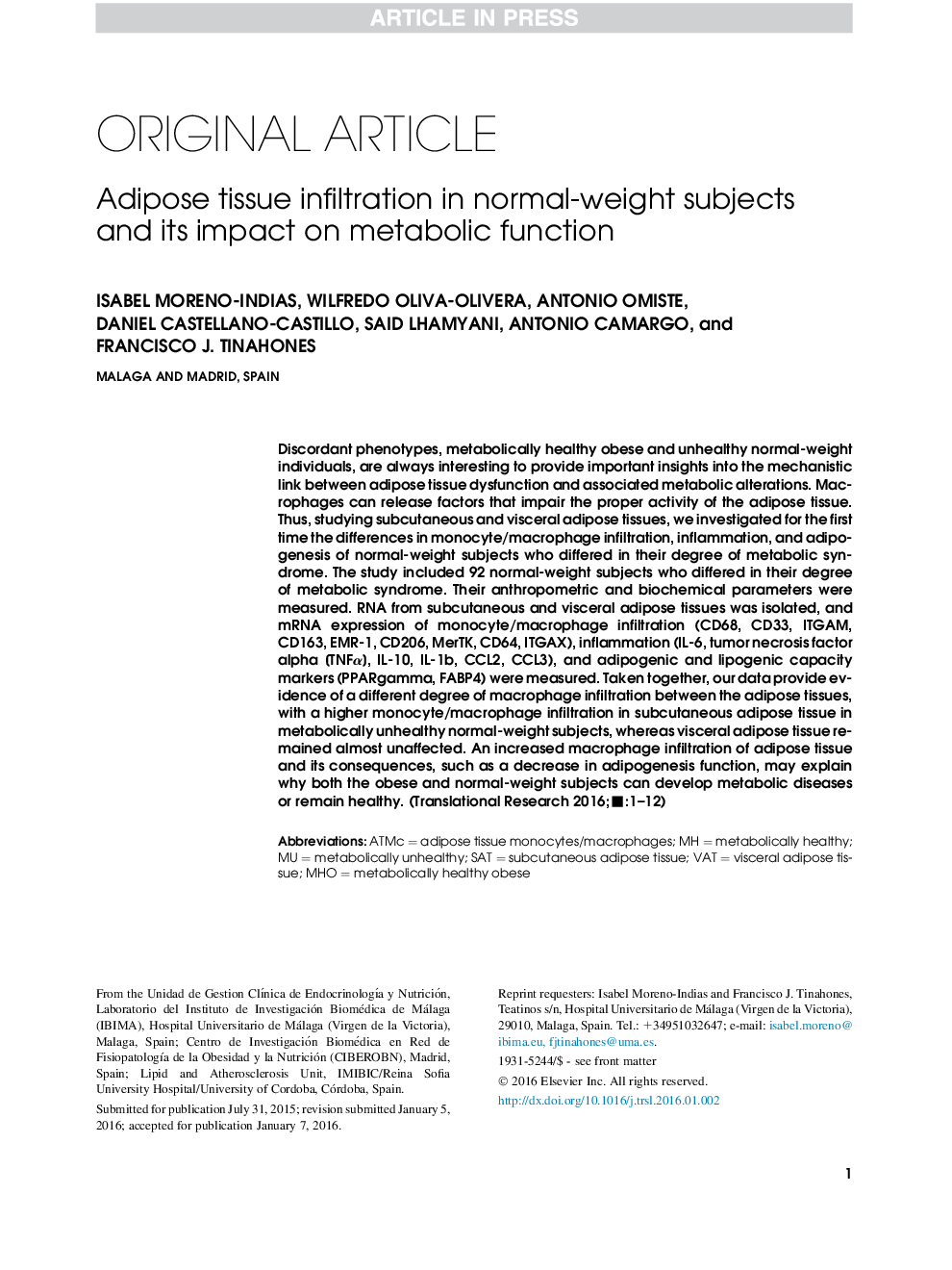| Article ID | Journal | Published Year | Pages | File Type |
|---|---|---|---|---|
| 6155849 | Translational Research | 2016 | 15 Pages |
Abstract
Discordant phenotypes, metabolically healthy obese and unhealthy normal-weight individuals, are always interesting to provide important insights into the mechanistic link between adipose tissue dysfunction and associated metabolic alterations. Macrophages can release factors that impair the proper activity of the adipose tissue. Thus, studying subcutaneous and visceral adipose tissues, we investigated for the first time the differences in monocyte/macrophage infiltration, inflammation, and adipogenesis of normal-weight subjects who differed in their degree of metabolic syndrome. The study included 92 normal-weight subjects who differed in their degree of metabolic syndrome. Their anthropometric and biochemical parameters were measured. RNA from subcutaneous and visceral adipose tissues was isolated, and mRNA expression of monocyte/macrophage infiltration (CD68, CD33, ITGAM, CD163, EMR-1, CD206, MerTK, CD64, ITGAX), inflammation (IL-6, tumor necrosis factor alpha [TNFα], IL-10, IL-1b, CCL2, CCL3), and adipogenic and lipogenic capacity markers (PPARgamma, FABP4) were measured. Taken together, our data provide evidence of a different degree of macrophage infiltration between the adipose tissues, with a higher monocyte/macrophage infiltration in subcutaneous adipose tissue in metabolically unhealthy normal-weight subjects, whereas visceral adipose tissue remained almost unaffected. An increased macrophage infiltration of adipose tissue and its consequences, such as a decrease in adipogenesis function, may explain why both the obese and normal-weight subjects can develop metabolic diseases or remain healthy.
Keywords
Related Topics
Health Sciences
Medicine and Dentistry
Medicine and Dentistry (General)
Authors
Isabel Moreno-Indias, Wilfredo Oliva-Olivera, Antonio Omiste, Daniel Castellano-Castillo, Said Lhamyani, Antonio Camargo, Francisco J. Tinahones,
